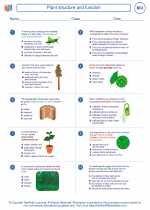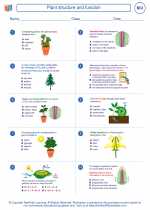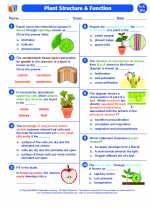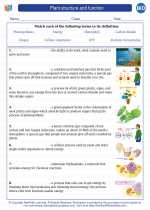Characteristics of Commensalism
- One-sided Benefit: In commensalism, one organism benefits while the other is unaffected. The organism that benefits is known as the commensal, while the other is the host.
- Neutral Effect: The host neither gains nor loses anything from the relationship.
- Common in Nature: Commensal relationships are widespread in nature and can be observed between different species of plants, animals, and microorganisms.
Examples of Commensalism
There are numerous examples of commensalism in nature:
- Barnacles on Whales: Barnacles attach themselves to the skin of whales, obtaining food and shelter while the whale is unaffected.
- Epiphytic Plants: Certain plants, like orchids and bromeliads, grow on tree branches, utilizing the tree for support while not harming it.
- Birds and Nesting Sites: Birds often build nests in trees, benefiting from the structure and protection provided by the tree, without significantly impacting the tree.
Study Guide for Commensalism
When studying commensalism, it's important to understand the following key points:
- Define commensalism and distinguish it from other types of symbiotic relationships such as mutualism and parasitism.
- Identify examples of commensalism in different ecosystems, including terrestrial and aquatic environments.
- Discuss the potential evolutionary advantages and disadvantages of commensal relationships for the organisms involved.
- Compare and contrast commensalism with other ecological interactions, considering the effects on population dynamics and community structure.
- Examine the role of commensalism in maintaining ecological balance and biodiversity within ecosystems.
[Commensalism] Related Worksheets and Study Guides:
.◂Biology Worksheets and Study Guides High School. Plant structure and function
Worksheet/Answer key Plant structure and function
Plant structure and function  Worksheet/Answer key
Worksheet/Answer key Plant structure and function
Plant structure and function  Worksheet/Answer key
Worksheet/Answer key Plant structure and function
Plant structure and function  Worksheet/Answer key
Worksheet/Answer key Plant structure and function
Plant structure and function  Vocabulary/Answer key
Vocabulary/Answer key Plant structure and function
Plant structure and function  Vocabulary/Answer key
Vocabulary/Answer key Plant structure and function
Plant structure and function 

 Worksheet/Answer key
Worksheet/Answer key
 Worksheet/Answer key
Worksheet/Answer key
 Worksheet/Answer key
Worksheet/Answer key
 Vocabulary/Answer key
Vocabulary/Answer key
 Vocabulary/Answer key
Vocabulary/Answer key

The resources above cover the following skills:
Concepts of Life Science (SC1, SC2, SC3)
The student demonstrates an understanding of the structure, function, behavior, development, life cycles, and diversity of living organisms by describing the structure-function relationship